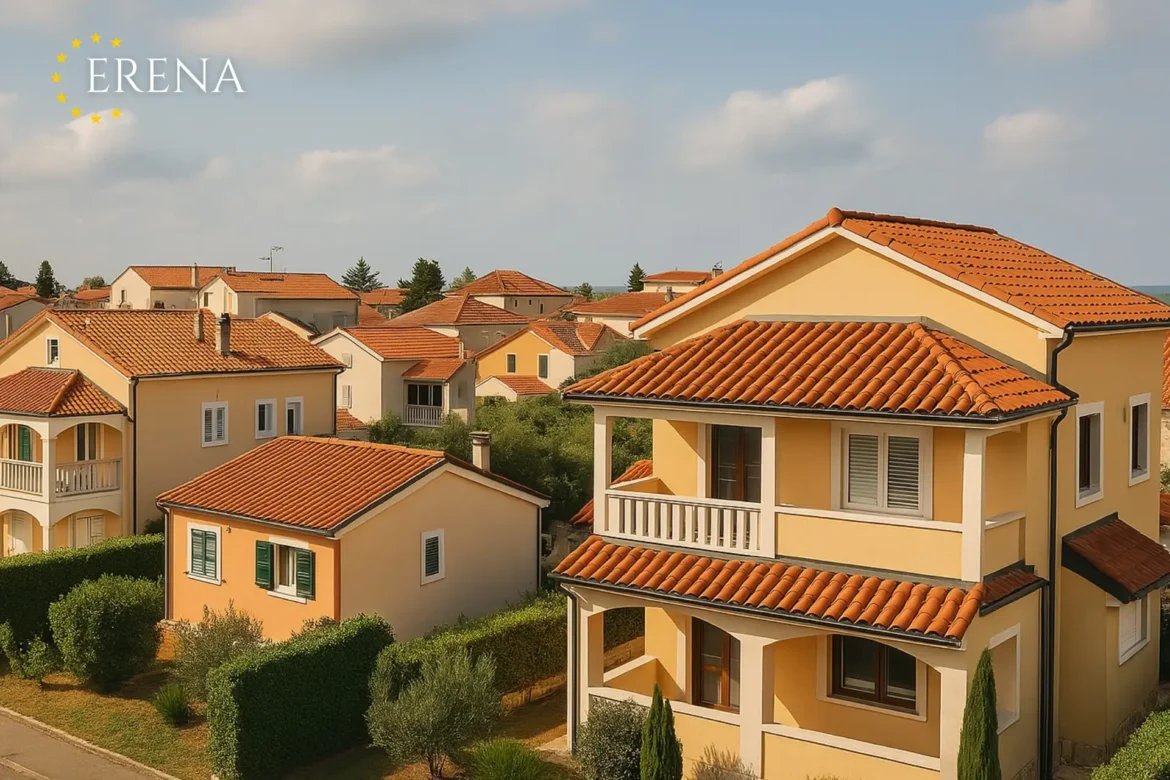Špadići, a coastal district near Poreč in Istria, Croatia, has long been a hotspot for tourists and real estate investors. However, with the implementation of new property tax legislation effective January 1, 2025, the local real estate market has entered a transitional phase. This article explores how the new regulations have impacted property prices, rental trends, and investment potential in Špadići.
New Tax Legislation in Croatia
The Croatian government introduced a tax reform aiming to discourage speculative purchases and promote long-term rentals in popular tourist areas.
Key elements of the legislation:
- Property tax rate is determined locally, ranging from €0.6 to €8 per square meter annually. In Špadići, the 2025 rate is set at €5/m².
- Exemptions apply to primary residences and properties rented out for more than 10 months per year.
- Declarations must be submitted by owners to local tax authorities by March 31 each year.
- Penalties for violations or non-compliance range from €1,000 to €6,000.
This legal framework is designed to make housing more accessible to locals, particularly young families and full-time residents.
Špadići Real Estate Market Response
Property Sale Prices
Before the tax announcement, average property prices in Špadići ranged between €3,000 and €3,300 per square meter. Following the September 2024 announcement:
- By December 2024, prices had dropped by 5–7%.
- As of spring 2025, new-builds are selling for €2,850–€3,100/m².
- Older properties needing renovation are priced around €2,400/m².
Many short-term rental owners began offloading their properties due to the increased tax burden, resulting in more listings and moderate price adjustments.
Rental Market Shift
The new legislation has caused a shift from short-term to long-term rentals.
- Long-term leases accounted for 40% of the rental market by March 2025 (up from 35%).
- Average monthly rent for a one-bedroom apartment is now €750–€850.
- Daily rentals remain profitable but face higher tax obligations and administrative costs.
This trend benefits locals looking for stable, year-round accommodation.
Investment Strategies in Transition
With tax incentives favoring long-term rentals, investors are adjusting their portfolios:
- Increased interest in small, efficient units (up to 50 m²).
- Preference for managed residential complexes with integrated rental services.
- Demand for legal, tax-exempt rental setups is growing.
The result is a more sustainable, resident-focused investment landscape in Špadići.
Market Sentiment and Feedback
Opinions from market participants:
- Local residents support the reform as it improves housing availability.
- Real estate agents report slower property transactions but stronger interest in rental properties.
- Investors are refocusing from short-term gains to long-term stability.
Market activity is expected to recover by summer 2025 as stakeholders adapt to the new rules.
Forecast for 2025–2026
- Sales prices are expected to stabilize between €2,800–€3,100/m².
- Demand remains strong due to the region’s appeal.
- Long-term rental properties will remain a high-demand asset.
- Rental rates may decrease by 5–10% due to increased supply.
Conclusion
Croatia’s updated property tax law has introduced a new dynamic to the Špadići real estate market. While short-term volatility was inevitable, the region is now experiencing greater price stability, increased focus on long-term rentals, and a shift toward more sustainable investments.
Špadići remains an attractive destination — now especially for conscious buyers and investors aligned with the new tax structure and long-term residency trends.

